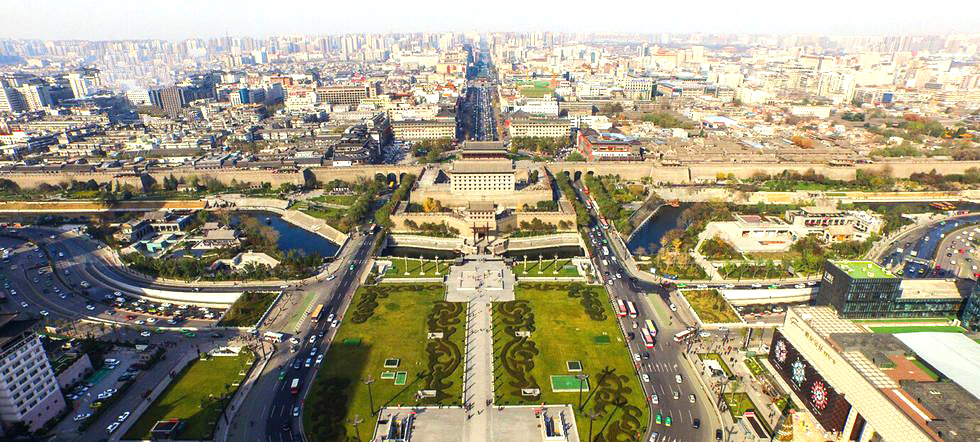Tang-era Chang’an planned with symmetry in mind

City planning in modern Xi'an is influenced by the symmetrical layout of its predecessor Chang'an in the Tang Dynasty.
Xi’an, in Shaanxi Province, has had a number of name changes. Known as Daxing during the Sui Dynasty (581-618), it then became Chang’an in the Tang Dynasty (618-907). Chang’an was the capital of the two dynasties and the largest city in the world at the time. Constructed by the Han ethic group, it holds many of their traditional design and architectural styles.
Recent archaeological studies prove that the construction of Chang’an was based on the principle of axial symmetry. This means it was a carefully planned city in a checkerboard pattern and each walled and gated ward was uniformly arranged in the city. It consisted of three sections: the imperial city, the palace city, and the civilian section. The rectangular civilian section was located symmetrically around the central axis. The palace city was located in the north-central section of the civilian section and the imperial city was sited to the south of the palace city.
The planners adhered to strictly left-right symmetrical patterns in terms of the city layout. A north-south running central axis led from the northern Chengtian Gate of the palace to the Zhuque Gate of the imperial city, which lay at the heart of the city, then continued on to the southern Mingde Gate of the civilian section. The axis was also placed on the two grand avenues, running from north to south—Chentian Gate and Zhuque Avenues—which bisected the city. To highlight the importance of the imperial palace, Chentian Gate, Taiji Hall, Liangyi Hall and other magnificent buildings were situated in the northern part of axis in a demonstration of imperial power.
The layout of Chang’an in the Tang era influenced city planning in several other Asian capitals for many years to come, such as the ancient Japanese cities of Heijokyo, Nara today and later Heian-Kyo, modern-day Kyoto.
